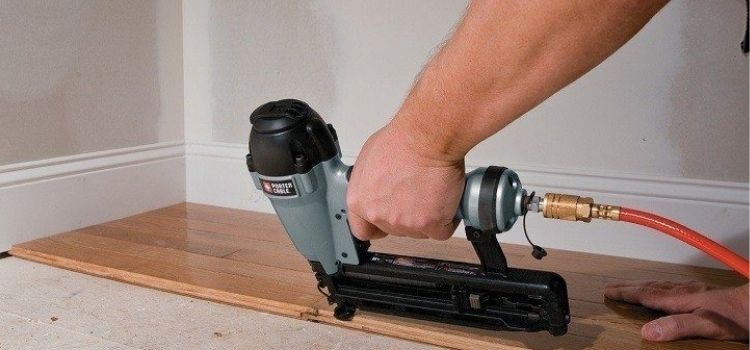Nail guns are a fantastic way to go. Whether you’re a hobbyist or a professional in the building industry, this cutting-edge device has many applications. We’ve looked at the five most common types to help you choose the best nail gun for your project.
1- Brad Nail Gun
Brad nail gun is one of the most popular nail guns on the market because it shoots ultra-thin Brad nails that are 18-gauge (though you can use 15–16-gauge nails). Because they’re so thin, Brad’s nails aren’t readily apparent when used, making them ideal for trim work like window and door casting constructions.
Carpet fastening is also often completed with a Brad nail gun. Those building small furniture woodwork, such as jewellery boxes and light cabinets, might also rely on the Brad nail gun.
2- Framing Nail Gun
Framing nail guns can fire nails up to 3½ inches in length. Framing nail guns come as either a clipped head or a round head nailer, with the latter able to contain more nails and so is preferred for high-volume projects.
Framing nail guns can build large wooden items such as fences, decking, and wood sheathing on construction projects.
3- Pin Nail Gun
The pin nailer is made of 23-gauge pin nailers, the tiniest of which have a diameter of less than 2.5 millimetres.
Because of their smaller head, pin nail guns aren’t suitable for work on surfaces or materials with a strong need for grip. They’re more suited to small tasks like upholstery repair, wooden toys, birdhouses, and tiny crates. The precision of the pin nailer is what makes it so popular.
4- Finish Nail Gun
Nail guns for finishing applications use 15 and 16-gauge nails and can fire nails up to 2½ inches long.
Finish nail guns are a popular tool in carpentry work. Most finishing nail guns have an angular design that allows them to reach into tight and narrow spaces. Finish nail guns also have exceptional precision and accuracy, thanks to their angular design.
5- Siding Nail Gun
Siding nails are driven in using a siding nailer. This tool’s nails are often broader and may be used to fasten small wood pieces to wooden hooks. Siding nail guns have both a soft tip and the variable power levels, allowing you to install hard and soft sidings.
How Do Nail Guns Work?
Nail guns, frequently used in carpentry and roofing construction, fire nails into materials from within a coil or strip formation. Battery power, gas operation, or compressed air (pneumatic nailers) can run the piston of the tool.
Nail guns operate on a similar principle to pneumatic nailers. The trigger is activated, and the piston is powered down by a blade mechanism, firing the nail with significant force and speed. New nails are loaded via a spring after each firing.
There are also corded and cordless power tools. There are advantages for both of these nail guns, so check what you need before selecting one.
